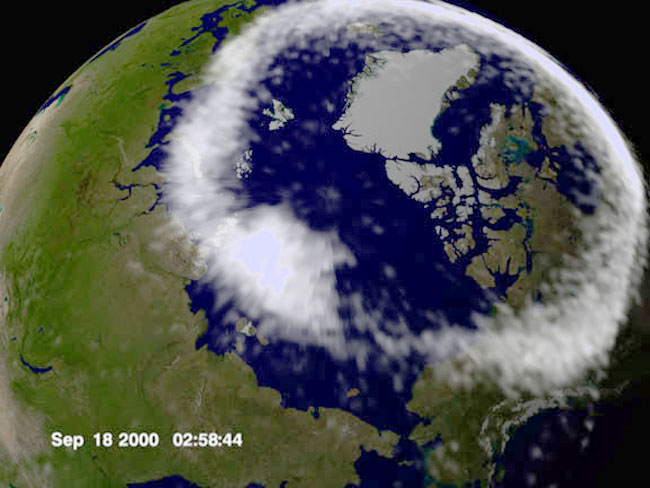
|
Credit & Copyright: IMAGE Satellite,
NASA
Explanation:
What are auroras made out of?
Most auroras are caused by the
solar wind exciting
electrons that are funneled down the
Earth's magnetic field.
These electrons strike
air molecules, liberating other electrons that
glow when re-acquired.
Sometimes, however,
auroras composed mostly of heavier
protons impact the Earth,
causing a more energetic display with strong
ultraviolet emission.
A proton aurora captured by the
IMAGE satellite in ultraviolet is
shown above ringing the
north magnetic pole of planet Earth.
Most electrons and protons
never reach the Earth to cause
auroras because they are completely deflected away at a
great distance by the
Earth's magnetic field.
The bright spot in the
auroral ring
indicates a particularly deep crack in the Earth's magnetic field where
protons were able to flow along a temporarily connected
region between the
Sun and the Earth,
relatively undeflected, until they impacted the
Earth's ionosphere.
|
January February March April May June July August September October November December |
| ||||||||||||||||||||||||||||||||||||||||||||||||
NASA Web Site Statements, Warnings, and Disclaimers
NASA Official: Jay Norris. Specific rights apply.
A service of: LHEA at NASA / GSFC
& Michigan Tech. U.
Based on Astronomy Picture
Of the Day
Publications with keywords: aurora - proton
Publications with words: aurora - proton
See also:
- APOD: 2025 January 7 Á A New Years Aurora and SAR Arc
- APOD: 2024 December 8 Á Aurora around Saturns North Pole
- APOD: 2024 October 16 Á Colorful Aurora over New Zealand
- APOD: 2024 October 13 Á Aurora Timelapse Over Italian Alps
- Northern Lights, West Virginia
- Aurora Australis and the International Space Station
- APOD: 2024 June 26 Á Timelapse: Aurora, SAR, and the Milky Way
